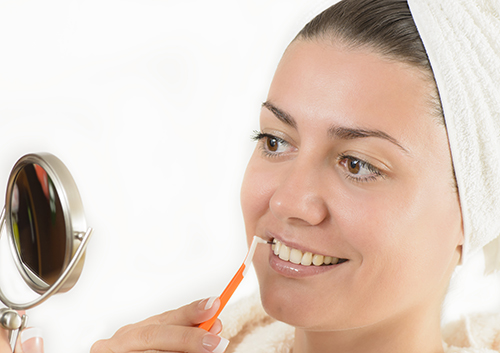Is a Lost Tooth a Lost Cause?
January 18th, 2023

We’re used to seeing athletes wearing mouthguards at practice or play, because dental trauma is one of the most common (and predictable) sports injuries. But it’s not just athletes who are at risk, and there are some events in our daily lives that we just can’t predict. Car accidents, falls, workplace injuries, even innocent playground structures can take their toll on our smiles.
A major chip or a crack in your tooth is upsetting enough, and should be seen by Dr. Timm as soon as possible. It’s even more unnerving when a tooth is knocked out completely. The technical term for a tooth which has been knocked out is an avulsed tooth, and it is a true dental emergency.
If you should suffer a partially or completely dislodged tooth, there is a possibility that your tooth can be reimplanted—if the damage isn’t too severe and if you get to our office immediately.
How can a lost tooth be saved? This is possible because of the complex biological engineering that anchors our teeth within the jaw. The root of a tooth is surrounded by the periodontal ligament. This connective tissue attaches the tooth to the alveolar bone of the jaw. When a tooth is knocked out, this ligament splits apart, leaving some tissue on the tooth root and some within the tooth’s socket.
To successfully reimplant a tooth, the connective tissue cells around the root of the tooth need to be vital, so that they can begin to reattach to the connective tissue left in the socket. Over time, this reattachment is complete, and the tooth becomes firmly anchored to the bone again.
It’s important to protect your tooth before you see Dr. Timm to make sure there will be enough healthy tissue for reattachment. First of all,
- Don’t panic! If you or a friend or family member lose a tooth, call your dentist or your emergency health care provider as soon as possible. You will get specific instructions for your specific situation.
If you are unable to reach a healthcare provider immediately, there are some general rules for taking care of an avulsed tooth:
- Find the lost tooth. Don’t touch the root—use the crown, or top part of the tooth, to pick it up. You are trying to preserve and protect the connective tissue on the root surface.
- If the tooth is dirty, gently rinse it in milk, saliva, or water. Don’t wipe it off, though. You could damage those connective tissue cells mentioned above.
- Place the tooth back in the socket, if possible. Gently hold it in place with your fingers or bite down (again, gently). You can also place the tooth in your mouth next to your cheek.
- If returning the tooth to the socket is not an option, or if you are worried about a child possibly swallowing the tooth, keep the tooth moist. Whole milk or solutions sold just for the purpose of preserving an avulsed tooth are better choices than water, which damage the tissue cells on the root. And never wrap the tooth tightly—this can also damage the connective tissue.
Above all,
- Don’t delay! The faster a tooth is reimplanted in its socket, the greater chance you have of keeping it. Really, every minute counts. Reimplantations are more successful if they take place within 30 minutes. After an hour out of the mouth, your tooth’s chances of successful reintegration are lower—but still worth pursuing!
What will Dr. Timm do?
- Evaluate the avulsed tooth.
There are variables which can affect whether or not a lost tooth is a good candidate for reimplantation. Trying to replace a baby tooth, for example, could interfere with the formation of the adult tooth. An adult tooth that is broken will probably require a different type of treatment.
- Prevent infection.
You might be given antibiotics and a referral to your medical doctor for a tetanus booster if needed.
- Clean the site.
The socket will be gently irrigated to clean the area and to remove any clots that may have formed which can interfere with the tooth’s placement.
- Recommend or perform a root canal.
Nerves and blood vessels within the tooth’s pulp generally don’t recover after a serious traumatic injury, so a root canal procedure could be necessary to preserve the health of your tooth. This procedure might be done immediately, or might be recommended for a later date.
- Stabilize your tooth.
The tooth must be stabilized after being reimplanted, so Dr. Timm will use a splint to anchor the tooth to the teeth next to it. The splint can be flexible or rigid, depending on the condition of the alveolar bone. Splinting generally takes from two to eight weeks, and you will be given detailed instructions for taking care of the area while you heal.
Losing a tooth is an alarming experience. But with prompt action, and a trip to our Michigan Center, MI office, it might be possible to make that loss only a temporary one.



